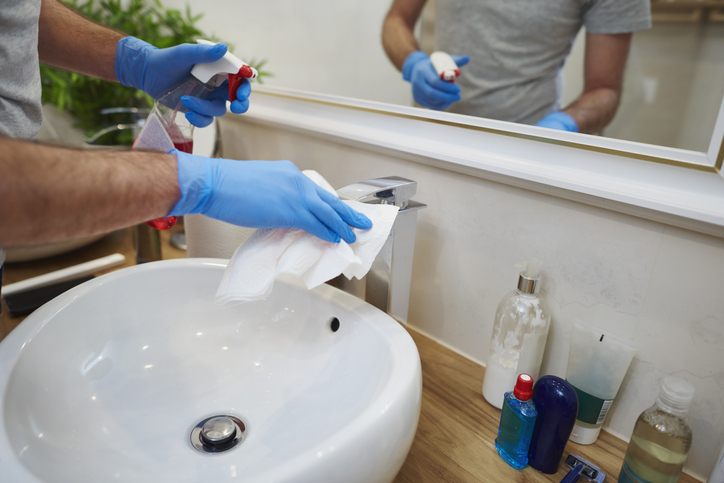As we adapt to life during a pandemic, you’ve likely heard a variety of tips for keeping you and your family safe from COVID-19. These could run the gamut from wearing face coverings in public to help prevent the spread of the virus to disinfecting your groceries or leaving your mail outside for an extended period of time.
When you get home from an errand, should you disinfect your purchases? What cleaners should you use and what should you clean? We’ll take a look at some tips for cleaning and disinfecting your home from the Centers for Disease Control and Prevention (CDC).
Disinfecting Tips
While scientists are still researching how long the virus can survive on a variety of surfaces, they have found that COVID-19 can survive anywhere from hours to days depending on the surface it lands on.
Here’s how long the virus survives on surfaces, according to the Cleveland Clinic:
- Glass – 5 days
- Wood – 4 days
- Plastic & stainless-steel – 3 days
- Cardboard – 24 hours
- Copper surfaces – 4 hours
It’s a good idea to practice routine cleaning of frequently touched objects like counters, remote controls, keyboards, faucets, sinks or doorknobs, according to the CDC. If someone in your home has COVID-19 symptoms or has a confirmed case of the virus, the organization recommends that that person be isolated and that the high-touch areas of that person’s room be regularly disinfected.
If possible, provide cleaning supplies to the ill person and have them frequently wipe down highly touched areas of their room to avoid exposing other members of your family to the virus.
The CDC recommends using a disinfectant that meets the EPA’s criteria for killing the virus or a diluted bleach mixture of five tablespoons of bleach per gallon of water or four teaspoons of bleach per quart of water.
It’s important to note that some disinfectants require a surface contact time of anywhere from several seconds to a few minutes to be effective. Make sure to read the container for recommended times to ensure your surfaces are being properly sanitized.
When disinfecting, wear gloves if you have them and dispose of them after each cleaning. You should also thoroughly wash your hands once you remove your gloves.
What About Cleaning Services?
If you have a cleaning service, you may be wondering if it’s safe for that service to continue in your home. One infectious disease doctor says you might want to consider canceling any non-essential visitors to your home during this time. (Home healthcare and other necessary services should still be considered if necessary.) The logic here is the same that has been used throughout the outbreak — the less exposure you have to others, the better, especially for older adults or those with high-risk conditions.
What About the Mail or Groceries?
Your risk of catching the virus via your mail or groceries is low, say experts. That’s because these items are typically made of porous packaging, which makes it difficult for the virus to survive. They are also exposed to the elements as they reach their final destination, which negatively impacts the virus’s survival rate.
For more cleaning and disinfecting tips, visit the CDC’s website.










